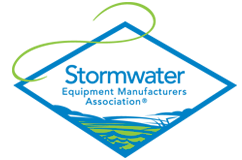- Home
- Who We Are
- Advocacy
- Stormwater Basics
- BMP Maintenance
- BMP Systems
- BMP Fact Sheets
- BMP Suppliers
- Biofiltration Soils
- Catch Basin Insert
- Construction Site BMP
- Debris Separator
- BMP Maintenance Suppliers
- Flow Restrictor and Regulator
- Hydrodynamic Separator
- Modular Dentention and Retention Systems
- Oil Water Separator
- Permeable Pavers and Permeable Asphalt Products
- Pretreatment Devices
- Rain Water Harvesting
- Spill Control and Containment Systems
- Stormwater Filtration System
- Stormwater Trash Debris Netting
- Tree Box Filter
- Stormwater Science
Policy and Position StatementsPosition statements provide clean water advocates and the public an understanding of how SWEMA approaches stormwater regulatory policies and rulemaking. The position statements are a collaboration between SWEMA’s member companies, the Technical Committee and the Government and Regulatory Affairs Committee. Highlights from The International BMP Database 2020 Summary ReportThis technical note highlights the results from the International BMP Database Summary Report that relate to the performance of manufactured separators and filters. Over the past 25 years, the International BMP Database (IBMPDB) has become the most complete source of information on stormwater quality control measures available to researchers and regulators. Comprised of user-submitted BMP monitoring projects, this repository provides access to both raw data and statistical tools to interpret hundreds of studies and thousands of storm events.
Water Quality Trading: Refining a Compliance Tool for Greater Cost-Effectiveness and Improved Watershed ProtectionOne such advancement in recent years is the use of water quality trading (WQT) to meet onsite stormwater compliance requirements. This paper represents SWEMA’s position on the subject of WQT and includes recommendations for policymakers to utilize when considering how to incorporate credit trading into their state or local best management practices (BMP) toolbox.
The Importance of Performance-Based Stormwater Standards and a Consistent Approach to BMP Evaluation and AcceptanceThe Stormwater Equipment Manufacturers Association (SWEMA) is highly supportive of stormwater management strategies and regulations that incorporate advances in stormwater science, encourage innovation, and successfully protect and restore receiving waters. Meeting each of these goals can be a challenge even for the best intentioned stormwater program. Recent trends in stormwater management have put an emphasis on the use of green infrastructure (GI) and low impact development (LID) techniques. Both GI and LID can be highly effective tools for mitigating the impacts of stormwater runoff, but there is not a consistent approach to the design and specifications of these systems which can lead to variable performance. In order to protect our water resources and mitigate the negative environmental impacts of human development it is essential that we use the best, most reliable technology at our disposal. To determine which technologies meet this standard we must have an evaluation process which is applicable to all available technologies, including GI and LID.
|

